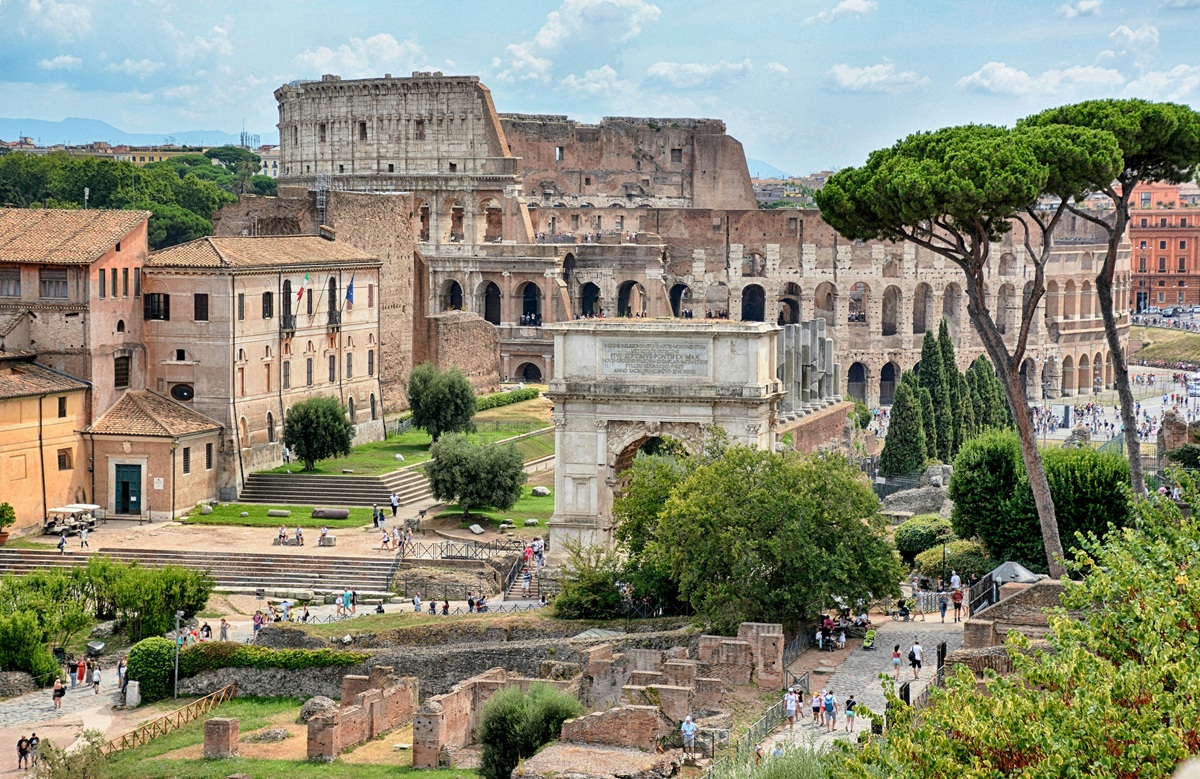
Rome is a city where every street corner whispers a story, where fountains, piazzas, and temples weave centuries of history together. For many, the Colosseum is the first stop. Still, in 2025, travelers increasingly seek deeper experiences – routes that connect iconic landmarks with hidden treasures, all without spending a fortune. That’s where the rise of the free tour in Rome comes in. These guided walks allow visitors to see not just the Colosseum, but also the living heart of the Eternal City, exploring it the way Romans do: on foot, in piazzas, and by fountains that have flowed for centuries.
The Allure of Trevi Fountain
The Trevi Fountain is more than just a photo stop – it’s a stage where history, art, and legend meet in a dazzling performance of water and stone. Built in the 18th century on the end of the Aqua Virgo aqueduct, it carries the same water that once quenched the thirst of ancient Romans nearly 2,000 years ago. Standing before it, you can almost hear the rush of time itself as water cascades over the marble figures.
On a free tour in Rome, guides bring the fountain’s stories to life. They explain how Nicola Salvi’s masterpiece isn’t just decorative – it’s symbolic. The central figure, Oceanus, rides a shell-shaped chariot pulled by sea horses, one calm and one wild, representing the dual nature of the sea. Around him, tritons and allegorical figures celebrate abundance and health, reminding onlookers that Rome’s survival was always tied to water.
But the Trevi is also a place of living traditions. Tossing a coin over your left shoulder ensures your return to Rome, a second coin promises new romance, and a third, as the legend goes, leads to marriage. Each year, millions of euros are fished from the fountain and donated to charities that support Rome’s needy – a modern ritual that makes the act of coin tossing more than just superstition.
The Living Ruins of the Roman Forum
Walking into the Roman Forum feels like stepping into the beating heart of the ancient world. What today appears as a scattering of marble columns and sun-bleached stones was once the vibrant center of Rome’s political, religious, and social life. Senators debated policies that would shape empires, merchants struck deals in busy markets, and citizens gathered to hear speeches that carried across centuries.
On a free tour in Rome, the Forum is more than a collection of ruins – it becomes a stage where guides reconstruct the stories hidden within the stones. They point out the remains of the Senate House, where decisions that altered the fate of millions were made. They pause by the Temple of Saturn, once home to Rome’s treasury, and share how its columns stood as silent witnesses to centuries of triumphs and crises. Even the paving stones underfoot seem alive, worn smooth by the sandals of citizens who once bustled through the square.
One of the most evocative stops is the spot where Julius Caesar’s body was cremated after his assassination. Tour guides often linger here, inviting visitors to imagine the crowds mourning their fallen leader, while modern-day Romans still leave flowers in tribute. Such moments collapse the distance between past and present, reminding travelers that this was not just an archaeological site, but a living city filled with passion, politics, and power struggles.
Discovering the Fountain of the Books
One of the delights of a free tour in Rome is seeing places most guidebooks overlook. Tucked into a quieter part of the city lies the Fountain of the Books, adorned with owls and open volumes in tribute to scholars of the Sapienza University. Guides use this stop to reveal the intellectual life of Rome, past and present, giving depth to a journey often dominated by emperors and popes.
The Grandeur of Piazza Navona
Few places better encapsulate Rome’s blend of art, architecture, and daily life than Piazza Navona. Once an ancient stadium, it now dazzles with Bernini’s Fountain of the Four Rivers and the constant hum of street performers. On the tour, visitors learn to see beyond the spectacle – tracing the layers of history hidden beneath the baroque facades.
The Pantheon: A Temple for All Time
The Pantheon remains one of Rome’s most awe-inspiring structures, with its perfect dome and open oculus. Guides often describe it as the “mathematical heart” of the city. In 2025, more tours focus on the Pantheon’s role as both a pagan temple and a Christian church, helping travelers appreciate why this building has been continuously used for two millennia.
Returning to the Colosseum with New Eyes
Even though the Colosseum is usually the first landmark on most itineraries, the free tours invite visitors to see it differently – less as a single monument and more as part of a living cityscape. The emphasis is on how the amphitheater connected with the Forum, the markets, and the surrounding neighborhoods. When travelers circle back to the Colosseum at the end of the route, they carry a fuller sense of context and connection.
The Bottom Line
Rome in 2025 is not just about grand monuments – it’s about weaving the familiar with the forgotten, the spectacular with the subtle. The new walking routes invite travelers to experience the city as a living museum, where every fountain, square, and ruin tells its story. With a free tour in Rome, visitors can go beyond the Colosseum, discovering a city that is at once ancient and ever new.
Like this:
Like Loading…
Please visit:
Our Sponsor
